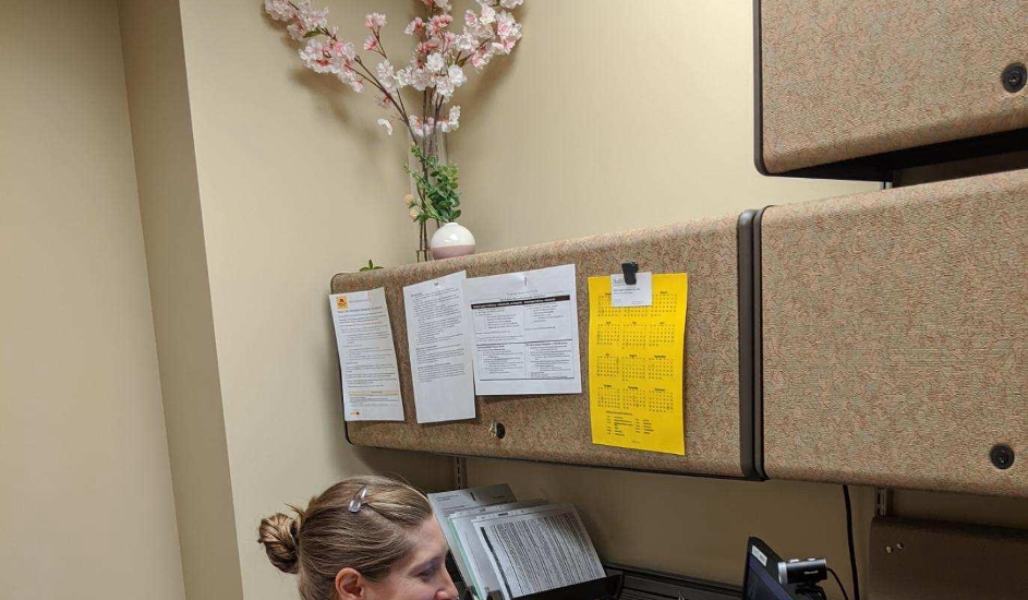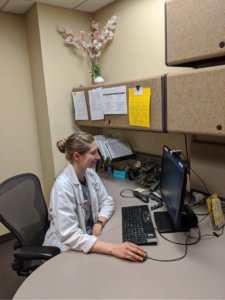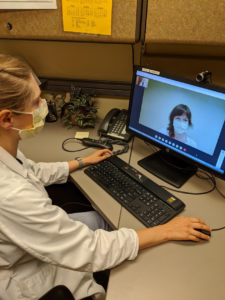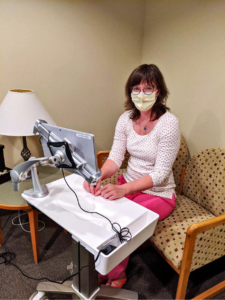
Telehealth Technology Allows Fairview to Expand Intensive Outpatient Program
When COVID-19 hit in the spring of 2020, the mental health and addiction service line at M Health Fairview in Minnesota faced a dilemma. Its partial hospitalization and day treatment services, which make up a large part of its care services, had to find a non-contact delivery avenue. Fairview has had multiple engagements with the Great Plains Telehealth Resource Center (gpTRAC) over the years and has consulted with gpTRAC on a more frequent basis since the beginning of the pandemic.
The March 13, 2020, CMS telehealth benefit expansion granted states the flexibility to temporarily waive telehealth requirements and reimburse equal to in-person services (CMS, 2020b). Effective March 20, 2020, Governor Walz signed Minnesota executive orders 20-11 and 20-12. Bill SF4200 was amended and approved by the Senate (Minnesota Legislature, 2020a).
“The specificity of covered services was not addressed in the state orders,” explained Chris Beamish, system director of Outpatient Mental Health Fairview. “Rather, the State was granted the authority to add statutes about covered services, which were slow to be defined and released. This impacted insurance coverage and access to our highest levels of outpatient care, so we made the decision to move our programmatic services to telehealth and let the payers catch up.”
M Health Fairview’s intensive outpatient and partial hospitalization care usually involved a three- to five-hour day for patients who came to the facility for multiple individual and group therapy sessions. M Health Fairview was able to move all its adult programs to a virtual platform very quickly.

Photo description: M Health Fairview provider conducting a telehealth visit
“We switched to phone services immediately after the local stay-at-home orders went into effect,” Beamish said. “Within a week, all 350 individual providers moved to video-based virtual care, which was originally a one- to two-year plan before COVID. Our intensive day treatment staff worked hard on delivering its programs virtually, and those were up and running within two weeks.”
While pediatric intensive care programs moved to a hybrid of in-person and online programs because children had a harder time receiving hours of care online, all adult services were moved completely to a virtual platform. Individual therapy sessions, a variety of group psychotherapy services, nursing appointments, and psychiatry visits were among the services offered via telemedicine.
“The beautiful thing about this is that we’re now able to offer these programs across the state,” Beamish said. “We hope that Medicare and Medicaid will continue to pay for these programs because it really does mean more access to healthcare for all.”
M Health Fairview has encountered patients being treated for mental health substance use disorders who simply couldn’t make the long commute. Telehealth technology removes that barrier to care and shrinks the distance to needed healthcare professionals.
“We had one patient who was on a transplant list, and that individual wanted support from a mental health care group,” Beamish said. “Telehealth allowed us to place that person in a group that had a more common milieu, a more similar demographic to support her experience and recovery.”
The benefits of better access, greater reach for providers, and more specialized care help M Health Fairview accomplish its mission of caring for those with mental health needs across the state.

Photo description: M Health Fairview provider conducting a telehealth visit
Sidebar: Converting Homeless Shelters Into Telemed Hubs
One of the biggest drawbacks with telehealth services is that urban and rural residents may lack reliable internet connections, quiet and private space for a video visit, or devices to complete a video visit. M Health Fairview addressed this care gap and partnered with Catholic Charities to transform local transitional housing facilities into telemedicine hubs.
“We initially called the hubs our phone booths,” Beamish said. “Patients who didn’t have internet access could receive care at these hubs. If patients needed therapy or substance use disorder services, they could schedule appointments with our team. The team member at the housing facility would block off a room, help patients get connected, and help manage any follow-up. It was convenient, increased access, and reduced exposure risks for both patients and staff.”
M Health Fairview is now in the process of expanding that program by offering six hubs around the area. “Our traditional scheduling model was location dependent,” Beamish said. “Patients have to drive to a particular location for the next available appointment. Now, they can go to a hub for vitals or labs and then connect with the next available provider from our entire network. That means faster appointments for patients, greater access and more efficient use of our entire provider network.”

Photo description: M Health Fairview provider conducting a telehealth visit
